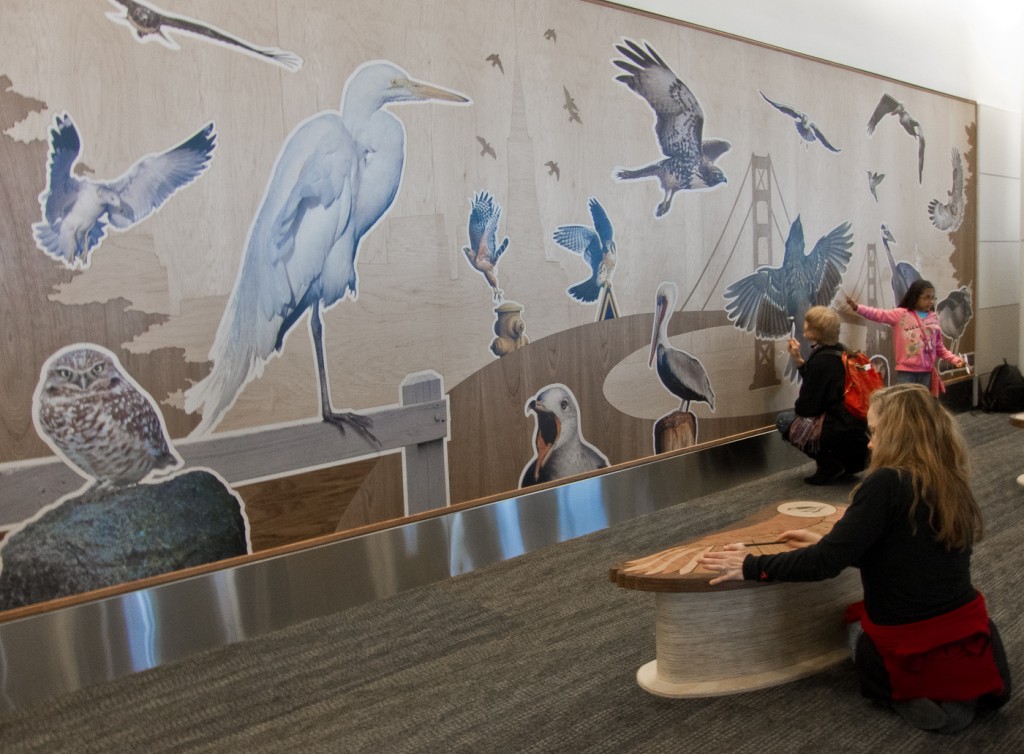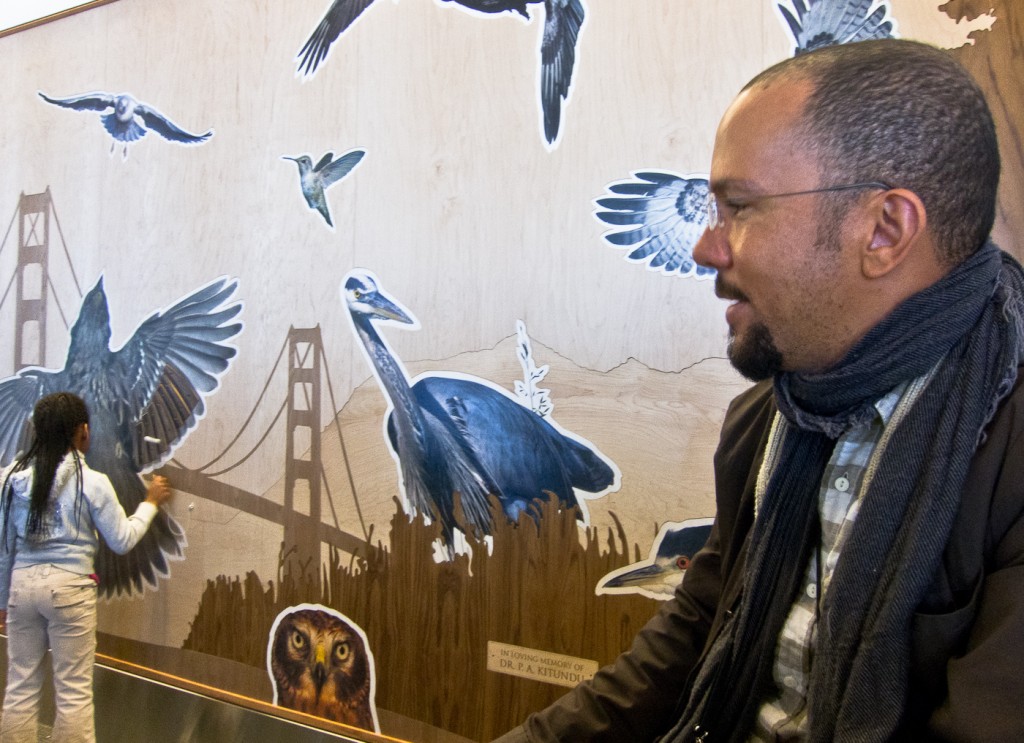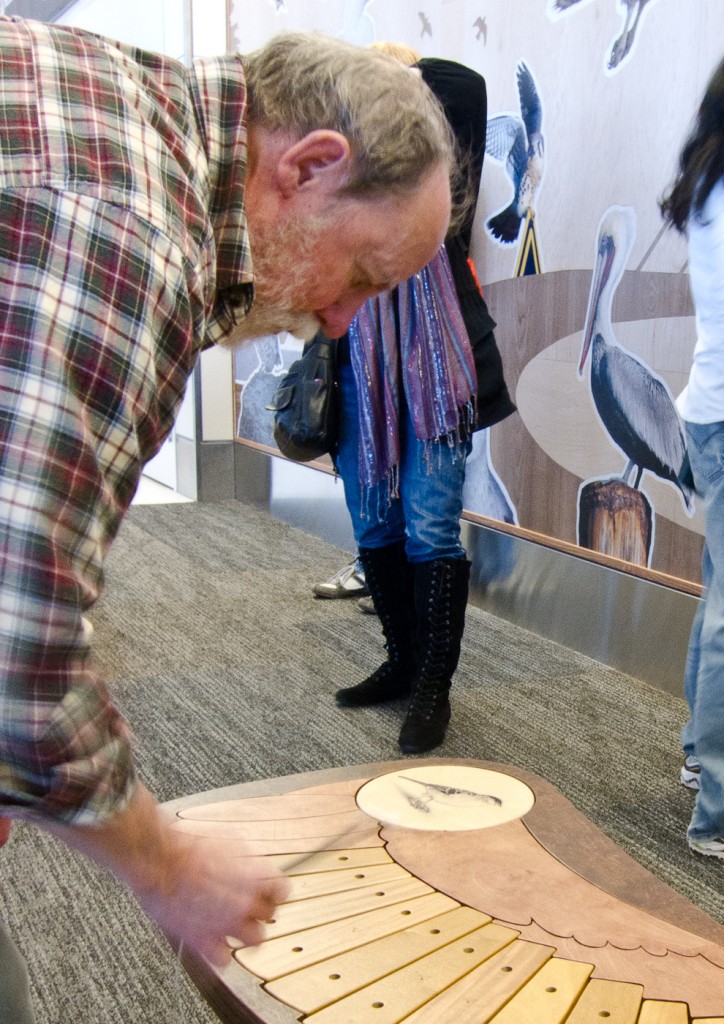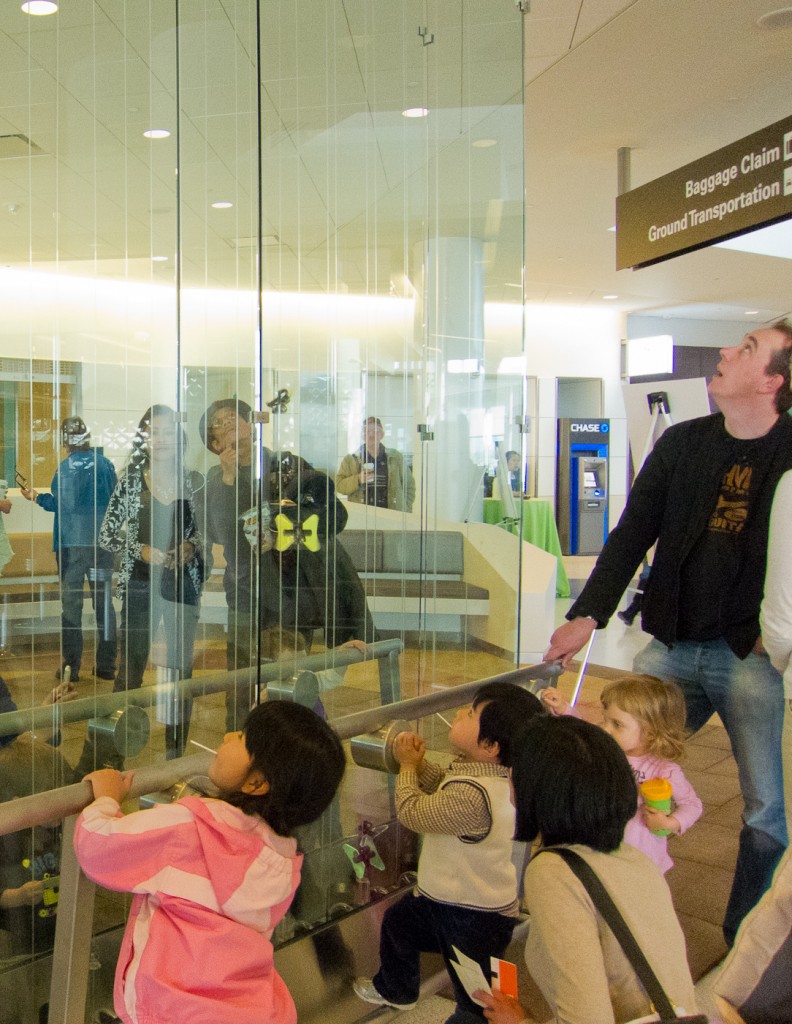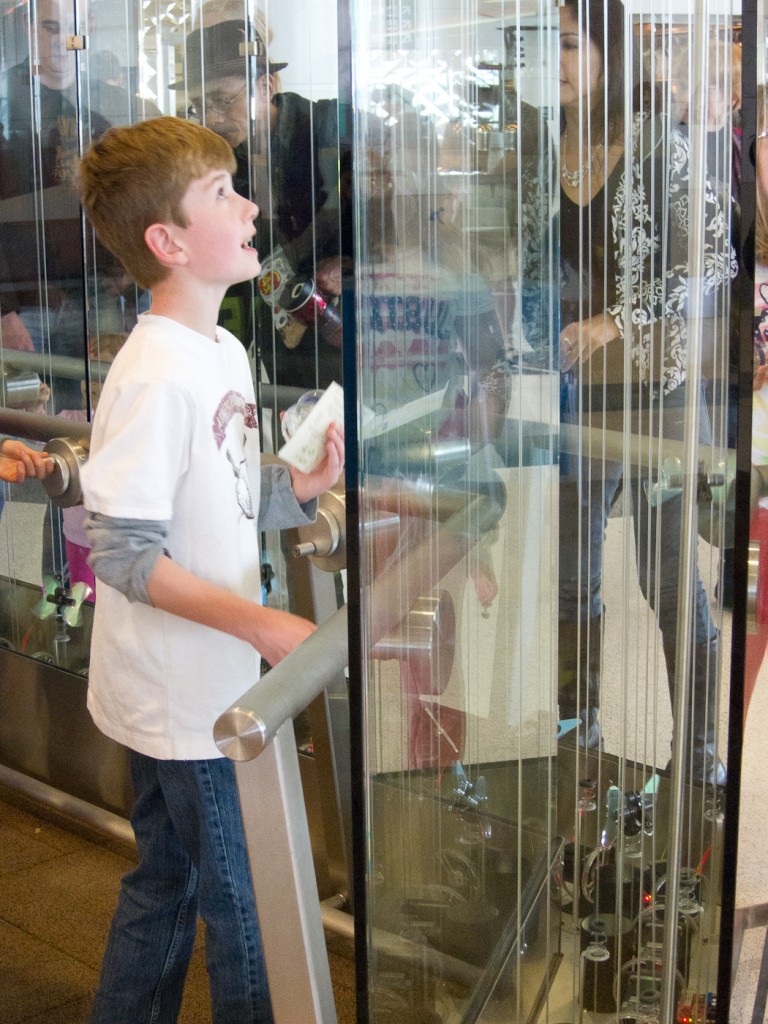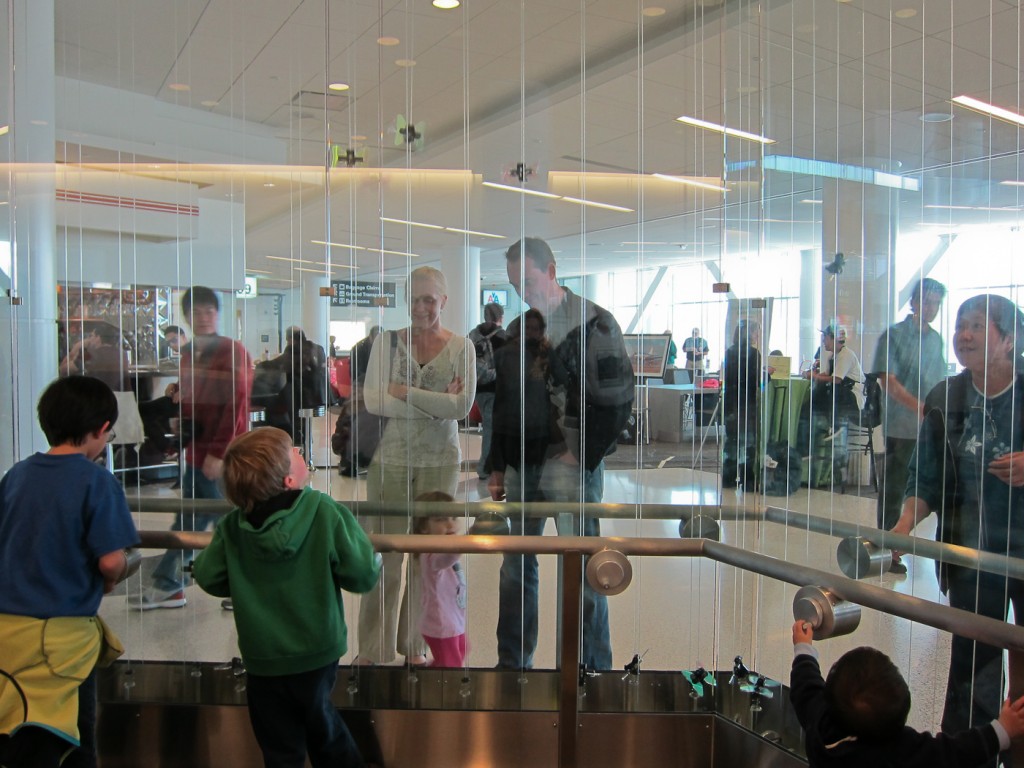A group of guest writers have been invited to contribute to Public Address throughout 2011. Our first “guest” post is written by Ulrika Andersson, an artist, designer and curator who splits her time between San Francisco and Berlin. Her work can be seen at The Exploratorium, The Fort Mason Center in San Francisco and at www.weststarland.com.
The opening of Terminal 2 at the San Francisco airport brings five new artworks to this site, which was accredited by the American Association of museums in 1999, a first among airports. Much has been written about the nature of airports and their place in contemporary culture and imagination: usually colored with great ambivalence towards these busy, commercially promiscuous and stylistically limited environments. While theorists have sometimes wrung their hands over the idea that these crass places can contain something as venerable and delicate as fine art; artists have let their imagination soar into the grand meeting places, parting places, cathedrals of rapidly evolving technology and finance, surrounded by a bazaar of bustling enterprise.
Airport-commissioned artworks have a certain role to play as celebrations of flight and the human longing to fly, to travel, to meet each other and to wax philosophical about it. In many ways they claim the position that a downtown would hold if passengers had the time to visit it, or that formerly was held by the grand railroad stations: inspiring pride in locals and confidence in visitors. It’s safe to say that airports in general have approached this task with mixed results, while the ever-expending expansions provides ongoing opportunities. At San Jose’s SJC there is a new series of data-driven works that are especially ambitious: blending input from weather reports, security cameras and passenger mood messages to surface in innovative places like the luggage carousel. The Hafermaas, Goods and Koblin piece eCloud (2010) uses switchable glass material to create a man-made cloud responsive to global weather reports. The Foreign Policy writer Walter Russell Mead called airports symbolic of “man’s triumph over the forces of nature” and claims that “not even farmers are as painfully exposed to the vagaries of weather as those who seek to travel by air”. It’s doubtful that this is literally true, but it’s a germinal statement and a nice accompaniment to a piece that considers both natural states and rapidly changing global human endeavors; the same factors that make airports and such potent sites for artists. It provides an impressive welcome hall to the Nation’s high-tech capital while leaving itself open to ambivalence, even fear of flying.
At SFO artworks have so far been of a more contained nature, and the new terminal offers no variation on that. Terminal 2, the new home of Virgin America is sure to be reasonably trendy and the terminal does offer a very representative welcoming hall; decked with local food and comfortable furniture (though the interior style would be more closely associated to Copenhagen than San Francisco). At the newly opened terminal there are five new artworks and twenty re-installed pieces from the existing collection: all selected by the San Francisco Art Commission. Also at at the Terminal 2 Community Open House on April 9th the art was joined by guest appearances by local musicians, seemingly as part of the ongoing You Are Hear program at SFO -a great idea that someone should get a raise for. From the entry hall visitors at the open house were first greeted with Janet Echelmans Every Beating Second, the swooping net construction in the ceiling that was most prominently featured in the press for the T2 project. Alongside the folk bands, local food and promises of sustainability it brought the mind to the macrame playgrounds of Bolinas from the seminal books on hippie aesthetic like Native Funk and Flash. This is as it should be in a trend-sensitive space: Native Flash and Funk is an increasingly hard-to-find book as it is being rediscovered along by a new generation of artists embracing the craft sensibilities of the early 70’s.
The cool of the terminal in contrast with the warmth of the artworks is enhanced in Walter Kitundu’s Bay Area Bird Encounters. This wall piece largely consists of images printed onto wood with the shading and grain of the wood panel outlining the rest of the shapes in this landscape piece. In front of the wall stands two low crescent shaped benches in the shape of birds’ wings. The wings feathers have been fashioned into blocks to be played by mallets like a xylophone, along with a corresponding instrument on the wings of one of the birds on the wall. Walter Kitundu is a devoted wildlife photographer and spends a great deal of his time studying these neighboring flying San Franciscans. So much so that he has tuned the instruments in the piece to mimic the birds’ calls when played on marked blocks left to right. At the T2 opening event he was watching delighted children pound the instruments, partially obscuring the devotion he has left at the lower right for his father: Dr. Peter Kitundu. This very much hand-made offering by an earthy, no-nonsense builder and musician is such a solid and dignified corner in the terminal, it made the familiar airport current of stress and alienation stand still.
Charles Sowers is emerging as an artist and designer of public art works; often involving elements of fluidity, materiality and currents. His work can be seen at The Exploratorium, The Randall Museum, The Fort Mason Center and the LIGO Science Education Center in Livingston Parish, LA. At T2 his Butterfly Wall makes an impressive presence: guarded as the butterflies are by thick, greenish plate glass and stainless steel footing. Like the massive time pieces at The Long Now Foundation, the ephemeral has a tendency of making itself known with the most solid of objects. Inside the glass tank twenty butterflies are hauled up on transparent cables as visitors to the piece crank the handles to propel them. As the cable stops spinning, the butterfly falls and glitters to the ground, its plastic wings casting blinding reflections around itself. The San Francisco Art Commission took some risk in commissioning this piece, as the rest of the artworks don’t contain moving parts. The piece delivers as it is the only piece in the airport collection that uses flight as an experience and as a medium, rather than as an abstract topic of inspiration.
SFO would do well in allowing for more interactivity and fluidity in the newly commissioned artworks, and it would have been nice to see more of the works embrace the data-driven and kinetic possibilities in exhibiting at an airport. While the craft-oriented artworks, Scandinavian furniture and wood paneling makes T2 is a significantly more fashionable terminal than your run-of-the-mill terminal, there is a lot of room for greater ambitions for the artworks at this site.
